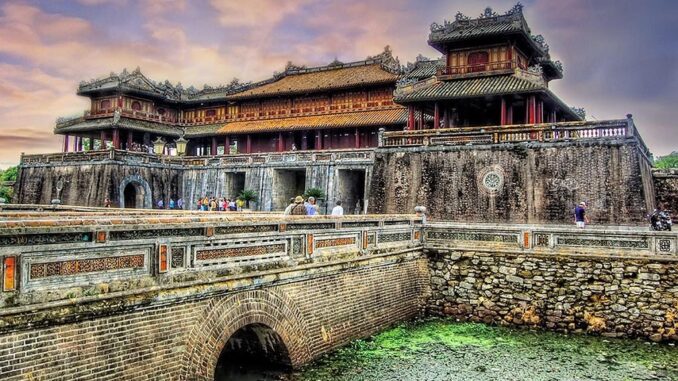
Established as the capital of unified Vietnam in 1802, Hue was not only the political but also the cultural and religious center under the Nguyen dynasty until 1945. The Perfume River winds its way through the Capital City, the Imperial City, the Forbidden Purple City, and the Inner City, giving this unique feudal capital a setting of great natural beauty.
The ancient capital of Hue today still preserves tangible and intangible cultural heritage, containing many values that represent the intelligence and soul of the Vietnamese people. Over the past few centuries, much of the country’s quintessence has been filtered and gathered here to forge a culture rich in identity to complete a wonderful natural picture with charming, poetic rivers and mountains. Therefore, when talking about Hue, people immediately think of citadels, golden palaces, splendid temples and shrines, majestic mausoleums, meditative ancient landscapes, and natural wonders skillfully created.
History
In 1636, the residence of the Nguyen Lords was settled at Kim Long (Hue). Early in the 18th century, Phu Xuan became the political, economic, and cultural center of the southern part of Vietnam. Then, from 1788 to 1801, it became the capital of Tay Son Dynasty.
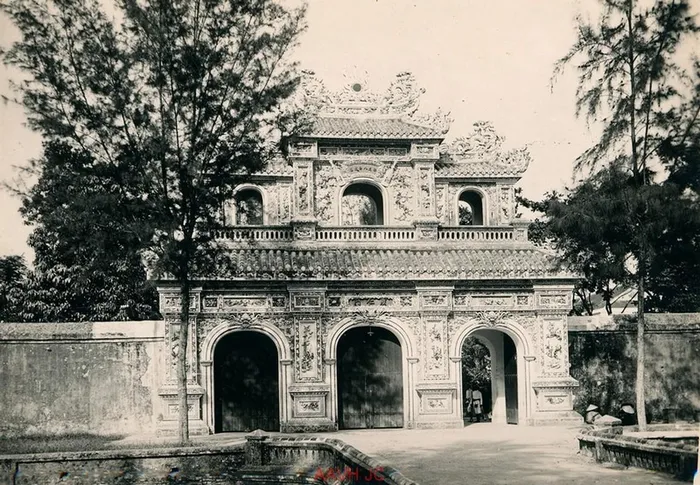
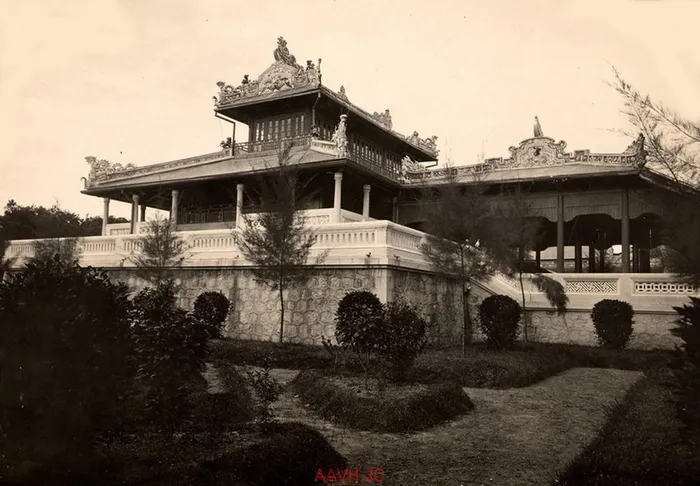
From 1802 to 1945, Hue was the capital of unified Viet Nam under the reign of the 13 Nguyen Kings. During these years, architectural works of high cultural and historic value were built, such as the Citadel, especially the Imperial City (including 253 constructions), the seven royal tomb compounds of nine kings of Nguyen Dynasty, Esplanade of Nam Giao, Ho Quyen Arena, and Hon Chen Temple.
Architecture
The complex of royal architecture represents and demonstrates the power of the Nguyen Dynasty’s centralism. Contained in this complex are Kinh Thanh Hue (the Hue Capital Citadel), Hoang Thanh (the Royal Citadel or Imperial City), and Tu Cam Thanh (the Forbidden Citadel) clustered together, symmetrically placed along the longitudinal axis and facing to the south.
The system of walls combines both Eastern and Western architectural styles and is placed in natural harmony with Ngu Binh Mountain, Perfume River, Gia Vien, and Boc Thanh islets. Even people implicitly consider these natural landscapes as part of the complex.
Surrounded by a square wall, almost 600 meters in length on each side, the Imperial City has four gates, of which the south gate (Ngo Mon) is the most typical in construction and is widely seen and recognized as the symbol of Hue Citadel. It served not only as the main entrance but was also the place where important events of the dynasty took place. Within the area of the Imperial City, the Forbidden Citadel was the area reserved for the daily activities of the royal family.
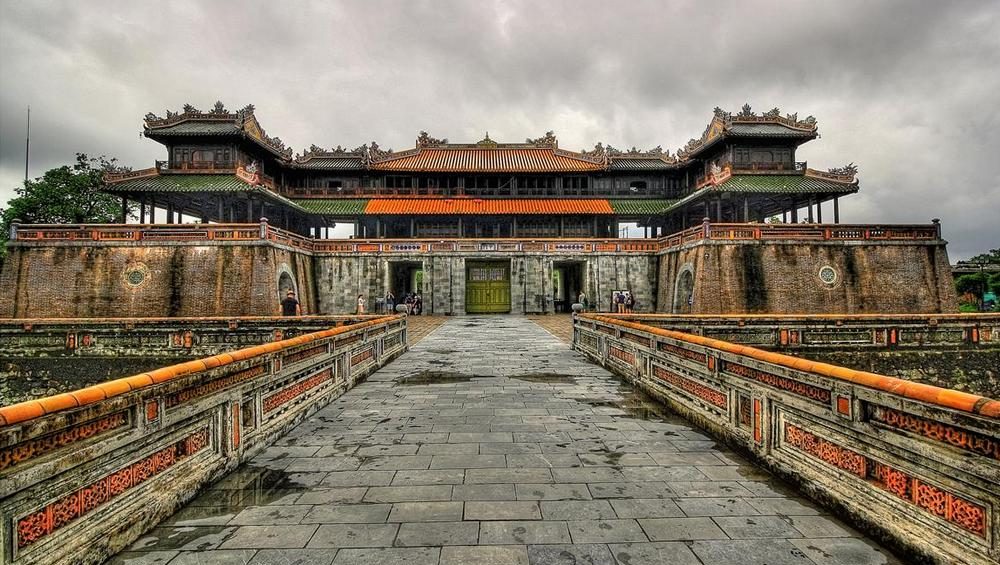
The main north-south axis, called Than Dao (miraculous road), runs through the three walls of the Hue Capital Citadel, Imperial City, and Forbidden Citadel and is marked with the important constructions of Hue Citadel.
Architecture
The complex of royal architecture represents and demonstrates the power of the Nguyen Dynasty’s centralism. Contained in this complex are Kinh Thanh Hue (the Hue Capital Citadel), Hoang Thanh (the Royal Citadel or Imperial City), and Tu Cam Thanh (the Forbidden Citadel) clustered together, symmetrically placed along the longitudinal axis and facing to the south.
The system of walls combines both Eastern and Western architectural styles and is placed in natural harmony with Ngu Binh Mountain, Perfume River, Gia Vien, and Boc Thanh islets. Even people implicitly consider these natural landscapes as part of the complex.
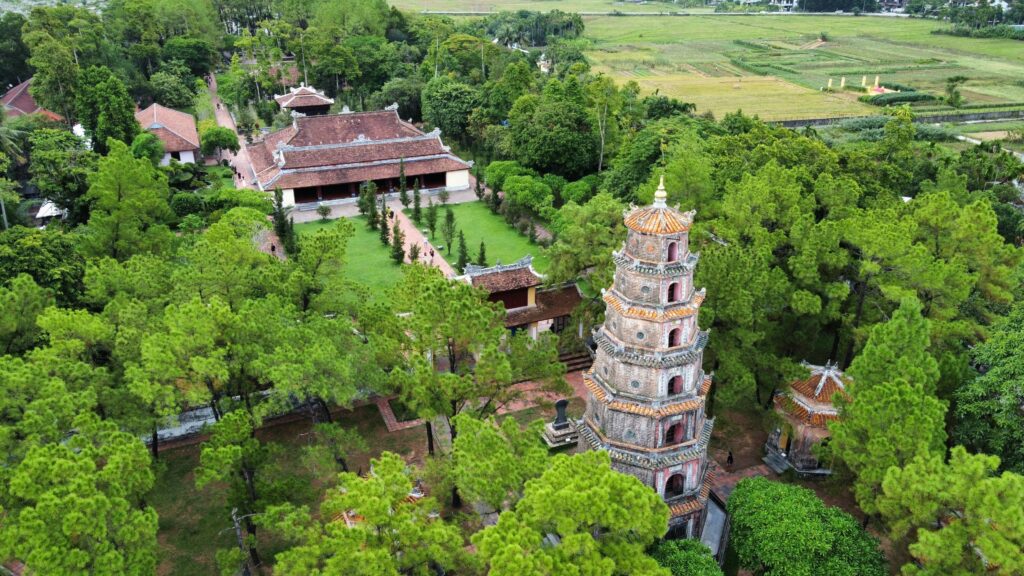
Conclusion
The Hue Monuments Complex was recognized by UNESCO as a World Cultural Heritage in 1993. And has been included in the list of 95 national monuments by the Prime Minister of Vietnam especially important in Vietnam.
The building’s architecture is very special. It is a harmonious, bold, and delicate variation between Eastern and Western architecture. Surrounded by majestic natural scenery such as Huong Giang River, Ngu Binh Mountain,… Therefore, this place has been preserved and accumulated for many years, not only for its ancient, decorative, and splendid features but also for the long history of our nation.
Get an opportunity to visit World Heritage Sites in Vietnam through Vietnam E-Visa!